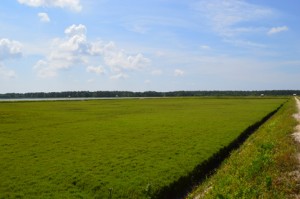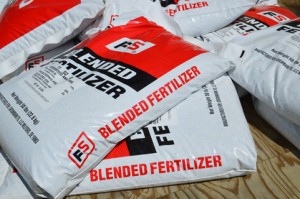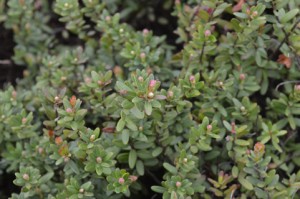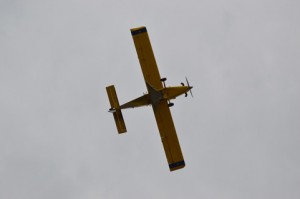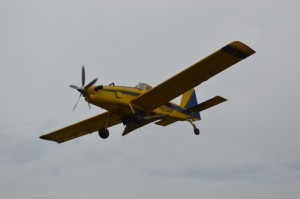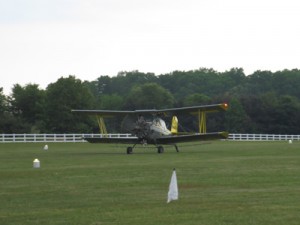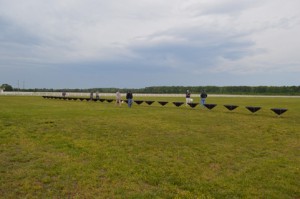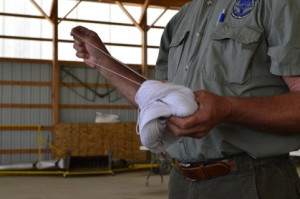Fertilizer applications have begun; it really must be spring!
The amount of fertilizer we apply to each bed is determined by variety, soil conditions, and past practices, requiring constant evaluation of current conditions, history, and trends. Nutritional needs are also different for young vines as opposed to established plantings. Additional nutrition is necessary because while cranberries have adapted (and thrive) in their native sandy soil, nutrients are taken from the bog through the harvest of fruit.
The three main elements usually added for nutrition are nitrogen, phosphorus, and potassium, and the team based their decisions on tissue samples, and last year’s yield. According to cranberries.org: “Cranberry plant demand for nitrogen is highest during three stages of the lifecycle critical to cranberry development–early growth, fruit set and bud set. Early growth is when the plant grows vegetatively through vining and root growth and produces a flush of new leaves. Fruit set is when the flower becomes pollinated and fruit begin to form. Soon after fruit set comes bud set when nitrogen is needed for both fruit development and production of the next year’s flower bud.”
“We’re definitely trying new stuff all the time,” Mike Haines says. “Lately, we’ve been planting in pure sand and there’s not as much organic material in there, if any; there aren’t as many nutrients in the soil, if any. So we’re actually upping how much fertilizer we’re putting on; we’re going to see how it goes and then modify as needed. Our main concern is nitrogen; we’ve doubled our starting numbers on that and then we’ll see where we end up. Hopefully it grows too much; I’d rather that than too little!”
These early applications (and indeed, most of our fertilizer application) are all done by air (thank you, Downstown!), but Mike expects to do some work with some land methods next week.

